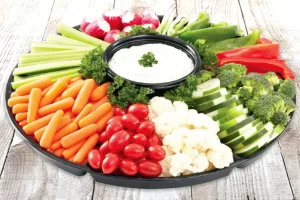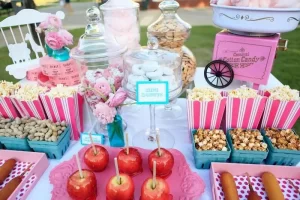Corporate events are not just about presentations and networking; they’re also about creating memorable experiences, and a key aspect of that is the catering. From board meetings to conferences and product launches, every corporate event can be elevated by thoughtful menu design and impeccable execution. delve into the best practices for corporate event catering, from conceptualizing the menu to ensuring a seamless dining experience for attendees.
Understanding the Audience:

The first step in successful corporate event catering is understanding the preferences and dietary requirements of the attendees. Whether it’s a formal gala dinner or a casual networking brunch, catering menus should be tailored to suit the tastes and needs of the guests. Conduct surveys or gather feedback from past events to gain insights into what works best for your audience.
Crafting the Menu:

Once you have a clear understanding of your audience, it’s time to craft a menu that reflects the tone and objectives of the event. Consider the theme, time of day, and duration of the event when designing the menu. Opt for a diverse selection of dishes that cater to different dietary restrictions and preferences, including vegetarian, vegan, gluten-free, and dairy-free options. Incorporate seasonal ingredients and regional flavors to add a touch of freshness and authenticity to the menu.
Collaborating with Vendors:

Selecting the right catering vendor is crucial to the success of your event. Look for vendors with a proven track record of delivering high-quality food and service within your budget. Schedule tastings to sample their offerings and discuss customization options to align with your event’s theme and requirements. Establish clear communication channels and timelines to ensure a smooth collaboration from menu planning to execution.
Attention to Detail:

In corporate events, the devil is in the details, and catering is no exception. Pay attention to presentation and plating, ensuring that each dish is visually appealing and Instagram-worthy. Consider incorporating interactive food stations or live cooking demonstrations to engage attendees and create a memorable dining experience. Provide clear signage and labeling for buffet-style setups to help guests navigate the offerings easily.
Seamless Execution:

On the day of the event, focus on seamless execution to ensure everything runs smoothly. Coordinate with the catering team and venue staff to finalize setup details, including table arrangements, food stations, and beverage service. Conduct a walkthrough to address any last-minute concerns and ensure that all safety and hygiene protocols are followed. Assign dedicated staff members to oversee the catering operations and address any issues that may arise during the event.
Conclusion:

Corporate event catering is a critical component of creating memorable experiences for attendees. By following best practices in menu design, vendor collaboration, attention to detail, and seamless execution, you can ensure that your event catering exceeds expectations and leaves a lasting impression on guests. Remember to adapt and evolve based on feedback and insights gathered to continually enhance the catering experience for future events.




